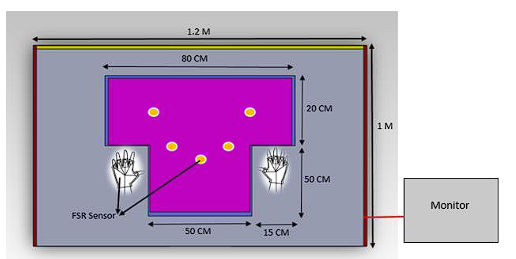Finger Strength Assessment Device for Thai Traditional Massage Training
doi: 10.14456/mijet.2023.3
Keywords:
Finger strength assessment, Finger power, Thai traditional massage, Yok Kradan, Cross-Legged sitting, FSR SensorAbstract
Finger strength is essential in Thai traditional therapeutic massage. One of the most well-known finger strength exercises is called Yok Kradan training with cross-legged sitting. It is a requirement for students in the Applied Thai Traditional Medicine (ATTM) program to practice their finger power. During traditional Yok Kradan testing, four instructors evaluate the student's performance by the amount of time (using a stopwatch) that students can lift their body up. Consequently, the start time and stop time are not synchronized and the inspectors are hard to observe the student’s body touching the floor. This research aims to design the finger strength assessment device in order to improve accuracy of body-lifting time measurement and standardize assessment. It consists of plywood with length, width and thickness of 120, 100, and 16 centimeters, respectively. Force Sensing Resistor (FSR) sensor are installed at 5 positions on the plywood to detect the practitioner’s knees, thighs and buttocks touching the floor. The FSR sensors are also attached on the gloves. The raspberry pi single board computer are used to read the values from all sensors in order to check whether any parts of the body is touching the floor or not. The experimental results show that the accuracy of 15 FSR sensors compared to standard weights ranged from 98.21% to 98.8%. Such error values can be tolerated in assessing finger strength by Yok Kradan training. Then, we evaluated our proposed device compared with traditional assessment. The result showed that our device helped in making the assessment more reliable and less disputable since the assessment results were promptly shown on the screen after the test.
References
United Nations Educational, Scientific and Cultural Organization, "Nuad Thai, traditional Thai massage", 2019. [Online]. Available: https://ich.unesco.org/en/RL/nuad-thai-traditional-thai-massage-01384. [Accessed: 12- Jun- 2022].
World Health Organization, "Benchmarks for training in traditional / complementary and alternative medicine: benchmarks for training in Nuad Thai". WHO Press, 2010, 3-4. [Online]. Available: https://apps.who.int/iris/handle/10665/44357.
K. Peng-ngummuang, K. Noiming, P. Promsit, S. Srisanga, and J. Junlatat, "Development of an exercise program to enhance the ability of students in Thai massage classroom: Considerations for promoting traditional medicine education at national and international levels," in Urban Studies: Border and Mobility, CRC Press, 2019, pp. 203–208.
B. Chaleephay, K. Paisal, W. Lertlop, and R. Puensaar, "Factor of the degree of finger and weight of the acupressure points that affect the feelings of massage," Suan Sunandha Rajabhat Univ., Bangkok, Thailand, 2012.
W. Sayorwan, S. Phaekhunthot, P. Chumworathayee, and J. Udompittayason, "Development of a 3D Para Rubber Model for Practicing Massage Skill of TTM Students of Kanchanabhisek Institute of Medical and Public Health Technology," Journal of Education Naresuan University, 2017, vol. 10, no. 3, pp. 71–82.
N. Chantawang, W. Leelananthakul, and A. Kongkum. Court-Type Traditional Thai Massage (basic). 1st ed. Mahasarakham: The Department of Applied Thai Traditional Medicine, Faculty of Medicine, Mahasarakham University, 2018, 146 pages (in Thai).
Ayurved Thamrong School, Center of Applied Thai Traditional Medicine, and Faculty of Medicine Siriraj Hospital. Thai Traditional Medicine in the Faculty of Medicine Siriraj Hospital. 2nd ed. Bangkok: Supawanit Press, 2014, 109 pages.
Foundation of Thai Traditional Medicine and Ayurved Thamrong School. Thai Traditional Massage (Court-Type Traditional Thai Massage). 2nd ed. Bangkok: Supawanit Press, 2011, 102 pages (in Thai).
M. Sarac, M. Solazzi and A. Frisoli, "Design Requirements of Generic Hand Exoskeletons and Survey of Hand Exoskeletons for Rehabilitation, Assistive, or Haptic Use," in IEEE Transactions on Haptics, vol. 12, no. 4, pp. 400-413.
S. I. Yaniger, "Force Sensing Resistors: A Review of the Technology," in Electro International, 1991, pp. 666-668.

Downloads
Published
How to Cite
Issue
Section
License

This work is licensed under a Creative Commons Attribution-NonCommercial-NoDerivatives 4.0 International License.








